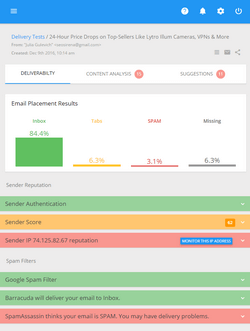Double Opt-In vs. Single Opt-In
A single opt-in method is one when users must take some action to subscribe. Typically, this involves filling out an opt-in form on a website. Thus, people consciously add themselves to your list. The downside of the opt-in method is that third party persons can (and they do) subscribe others to your list.
To protect people and yourself from such malicious subscriptions, setup your signup process in the way that the subscribers receive a confirmation email as soon as they were added to the list.
A confirmation email will allow them unsubscribe immediately if there was a mistake. They can unsubscribe by replying or clicking on a link within the email, for example like this one:
======
You receive this email because you or someone else added your email address to our mailing list. If you would prefer not to receive this newsletter in the future, please, reply with the word Remove in the Subject line, or click on the link below: mailto:remove@domain.com?Subject=remove
In this case, you’re alerted immediately about a wrong subscription and can take the appropriate measures – remove the subscriber from your list.
A double opt-in subscription method adds another step a potential subscriber has to take in order to become a member of your mailing list. When the subscriber enters an email address into a sign-up form, that address is temporarily held and a follow up message is immediately sent to that address. The message includes instructions for the subscriber to take some sort of action (reply, click a link, etc…) to confirm the email address as valid and that the subscription request was intentional. Only then, after the confirmation is received, the subscriber is added to the active mailing list.
A double opt-in method has a couple of advantages over a single opt-in process:
- Protects against erroneous subscriptions. People can misspell the email addresses and simple misspellings may cause email messages to be sent to invalid email addresses or to a completely unintended addresses.
- Protects against malicious subscriptions. It’s a shabby tactic but it is often practiced in the Internet. Someone can subscribe a third party person to as many mailing lists as possible, sending them a mountain of email. This creates a terrible headache for the victim and the sender because your newsletters turn into pure spam for those people.
- Protects against anti-spam legislation. A double opt-in method allows you withstand any spam complaints that may come up. A double opt-in is considered by mail administrators as the most privacy conscious way of handling the subscriptions. And confirmation logs protect against anti-spam legislation by proving the recipient’s consent to get emails.
Table of contents | Page list for this chapter | Next page

